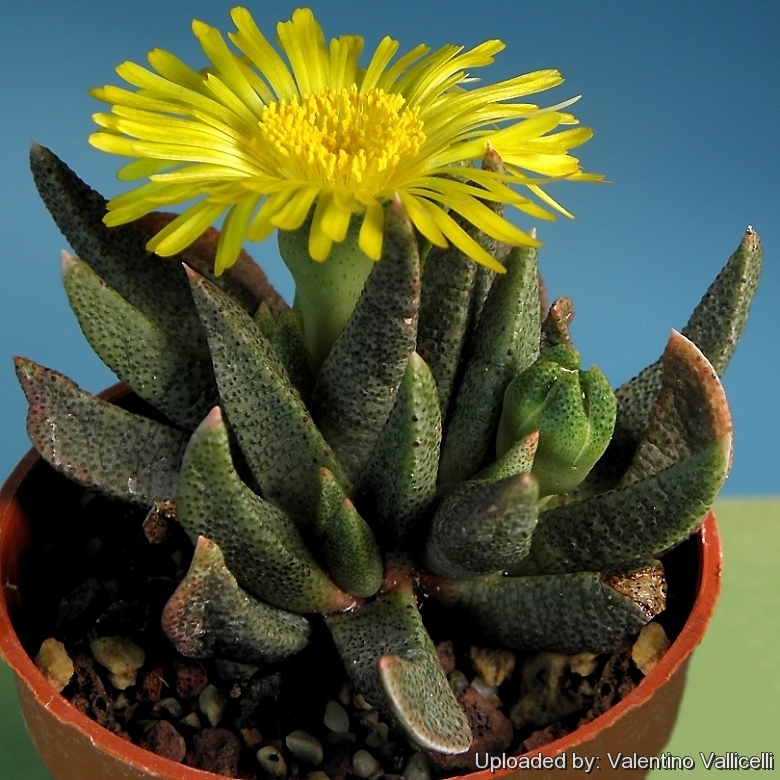
Rabiea lesliei Photo by: Valentino Vallicelli
It can grow outdoor in the rock garden and tolerates severe frost in winter.
Origin and Habitat: Chocolan and nearest district of Orange Free State, South Africa.
Typical locality: Hills between Westminster & Chocolan.
Habitat: Grows scattered in dry grassland slopes among big stones. Altitude range 1600-1880 m.
Ecology: The mechanism of seed dispersal is through a higrochastic fruit and the seed is only dispersed in the immediate environment, which results in local small communities.
Synonyms:
Description: Rabiea leslieiSN|19629]]SN|19629]] is a small multi-branched succulent up to 5 cm tall that forms compact tuft.
Stem: Almost stemless.
Roors: Deep, thick and fleshy. In the younger specimen is present only a central tap-root while the older plants will develop a thick, conspicuous, rhizome or rootstock.
Leaves: About 20-25 (or more long in cultivation) mm long 6-9 mm large, 6-8 mm broad. Erect and unequal with one leaf tapering toward the tip and the other enlarging at the keel near the tip. The epidermis is rough with numerous dots.
Flowers: 25-30 cm across bright yellow fading orange as they older, petals numerous (up to 60) filaments up to 220, anthers yellow.
Blooming season: Opening in the afternoon mainly from late winter through spring but it may flowers occasionally all year round.
More...Bibliography: Major referenses and further lectures
1) Heidrun E. K. Hartmann “Illustrated Handbook of Succulent Plants: Aizoaceae F-Z” Springer, 2002
 Rabiea lesliei Photo by: Giuseppe Distefano
Rabiea lesliei Photo by: Giuseppe Distefano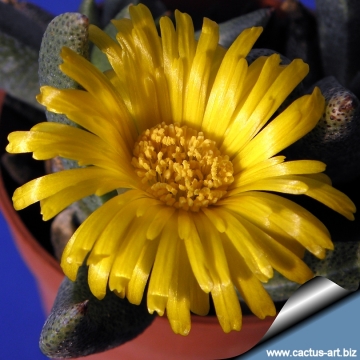 Rabiea lesliei Photo by: Cactus Art
Rabiea lesliei Photo by: Cactus Art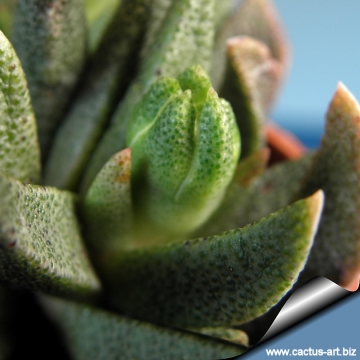 Rabiea lesliei Photo by: Cactus Art
Rabiea lesliei Photo by: Cactus Art Rabiea lesliei Photo by: Cactus Art
Rabiea lesliei Photo by: Cactus Art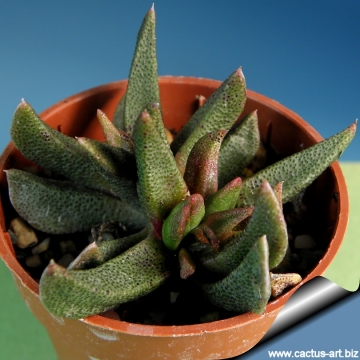 Rabiea lesliei Photo by: Cactus Art
Rabiea lesliei Photo by: Cactus Art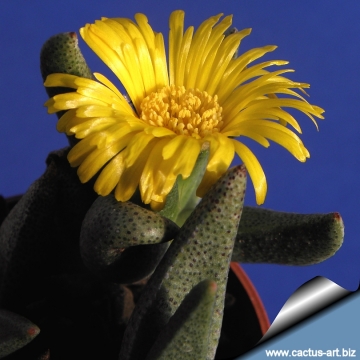 Rabiea lesliei Photo by: Cactus Art
Rabiea lesliei Photo by: Cactus Art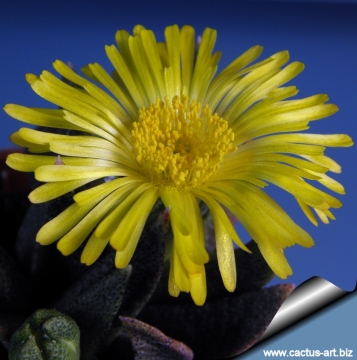 Rabiea lesliei Photo by: Cactus Art
Rabiea lesliei Photo by: Cactus Art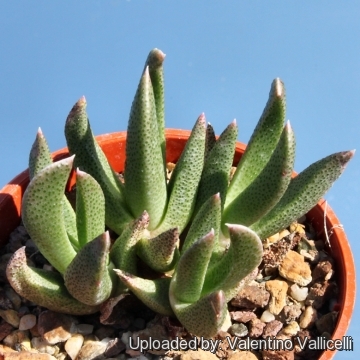 Locality: Trompsburg Photo by: Valentino Vallicelli
Locality: Trompsburg Photo by: Valentino VallicelliCultivation and Propagation: Rabiea are easy and rewarding plants than can be grown in pots or in the rock-garden. They can be watered year-round, water regularly from spring to Autumn but reduce watering frequency in winter, growth period is early Spring to late Summer, but is a very adaptable species that can grows opportunistically whenever the water availability and growing condition are favourable. Keep them cool, and half-shaded in summer, need full sun or light shade on the other seasons. Potted rabieas look best in a heavy soil and the same is true for plants in a rockery. Requires good drainage.
Frost Tolerance: Very frost hardy and grows best where there are cold winters (it is reported to be hardy to at least -18° C if very dry). It is difficult to keep the leaves free of scars and dead leaf-tips, but the abundant flowers hide them.
Propagation: Cuttings or (rarely) seeds
Remarks: Rabiea has a gorgeous, thick root system and when it is potted up, the plant can be progressively raised over the ground so that some of the roots can be seen and is especially cultivated for their looks. Architecturally it is a real stunner. When the "caudex" shape of the raised roots is adequately in evidence this plant is incomparable. They also tend to grow more "heads" when they are raised.
More...


















